Introduction to Tiles
Tiles have been around for centuries, and their use has only expanded and evolved over time. They are not just functional but also artistic pieces that can transform any space. Whether you are renovating your bathroom, designing a new kitchen, or redoing your floors, Kitchen tiles are a great option. This book will take you through everything you need to know about tiles, from the different types available to the best ways to install them.

What Are Tiles?
Tiles are thin, flat pieces made from materials like clay, stone, or cement, primarily used for covering walls, House floors, and roofs. They come in various sizes, shapes, and materials, each suitable for different purposes. Used for both decorative and practical reasons, providing durability, ease of maintenance, and beauty to spaces.
Different Types of Tiles
Tiles can be categorized based on the material they are made from. Here are the most common types:
- Ceramic Tiles: These are made from clay and are one of the most popular types of tiles. Ceramic tiles are highly durable, versatile, and come in a variety of colors and designs.
- Porcelain Tiles: A more refined version of ceramic tiles, porcelain tiles are made from denser clay and fired at higher temperatures. They are extremely durable and perfect for high-traffic areas.
- Marble Tiles: Made from natural stone, marble tiles are elegant and luxurious. They are often used for flooring and countertops in high-end homes.
- Mosaic Tiles: Small tiles arranged in intricate patterns. Mosaics are great for creating artistic designs and can be used on walls, floors, or backsplashes.
- Vitrified Tiles: These tiles are made by fusing clay with silica and quartz at very high temperatures. They are highly durable, non-porous, and easy to maintain.
Choosing the Right Tile for Your Space
When choosing, there are several factors to consider:
- Location: The type of tile you select will depend on where it will be used. For example, floors need durable like porcelain or vitrified, while walls may be better suited for ceramic or marble tiles.
- Style: Dal Tiles come in various styles, from modern minimalist designs to intricate patterns that add charm and character.
- Durability: Some tiles are more durable than others. Porcelain tiles are great for high-traffic areas, while marble tiles are better for accent areas.
- Water Resistance: Certain areas like kitchens and bathrooms require tiles that are resistant to moisture. Ceramic and porcelain tiles are perfect for these spaces.
The Importance of Grout
Grout is the material used to fill the spaces between tiles. Not only does grout enhance the overall appearance by creating a finished look, but it also serves practical purposes. Grout helps prevent moisture from seeping between tiles and provides structural stability.

Tile Patterns and Designs
Versatile medium for creativity. With different shapes, sizes, and colors available, you can experiment with a variety of patterns to create the perfect look for your space. Some popular patterns include:
- Herringbone: A zigzag pattern that is popular for both floors and walls.
- Chevron: Similar to herringbone, but the lines meet at sharp angles.
- Checkerboard: A classic pattern made with alternating light and dark.
- Basketweave: A grid pattern that resembles the weaving of a basket.
The Benefits of Ceramic Tiles
Ceramic tiles are one of the most common types of tiles, and for good reason. Here are some of the benefits of ceramic tiles:
- Durability: Ceramic tiles are long-lasting and can withstand wear and tear.
- Affordability: Ceramic tiles are generally cheaper than other options like marble or porcelain.
- Ease of Maintenance: Ceramic tiles are easy to clean and maintain. They are also resistant to stains and scratches.
Why Choose Porcelain Tiles?
Porcelain tiles are known for their high density and durability. Here are some reasons why they might be the best choice for your next tiling project:
- High Durability: Porcelain tiles can handle high traffic and heavy usage.
- Low Maintenance: Porcelain tiles require minimal maintenance and are resistant to scratches and stains.
- Water Resistance: Porcelain tiles are highly resistant to water, making them ideal for bathrooms and kitchens.
Installing Tiles: A Step-by-Step Guide
The installation of tile can be a daunting task, but with the right tools and knowledge, you can do it yourself! Here’s a step-by-step guide for installing tile on floors or walls:
- Preparation: Clean and level the surface where the tile will be placed. Make sure the area is dry.
- Planning the Layout: Measure the area and plan how the tile will be laid out. Start from the center and work your way out.
- Applying Adhesive: Spread tile adhesive on the surface using a notched trowel.
- Laying the Tile: Press each tile firmly into the adhesive. Use tile spacers to ensure even gaps between tile.
- Cutting Tile: If necessary, use a tile cutter or wet saw to cut tile to fit around corners or edges.
- Grouting: Once the tile are set, allow the adhesive to dry and then apply grout between the tile.
- Finishing Touches: Clean off excess grout and let the tile set for 24 hours before use.
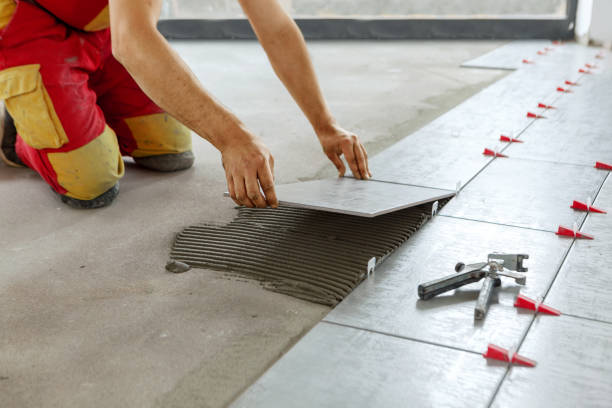
Caring for Your Tiles
Proper care can keep your tile looking as good as new for years. Here’s how you can maintain your tile:
- Regular Cleaning: Clean your tile regularly using mild soap and water. Avoid harsh chemicals that could damage the surface.
- Sealing: Some tile, such as marble or natural stone, may need sealing to prevent stains and moisture absorption.
- Preventing Damage: Use rugs and mats in high-traffic areas to prevent scratches and scuff marks on the tile.
Tiles for Different Rooms
Tile can be used in almost every room in your house. Here’s how to choose the best tile for each space:
- Kitchen: Use water-resistant tile like ceramic, porcelain, or mosaic for backsplashes and floors.
- Bathroom: Choose non-porous tile like porcelain or glazed ceramic for walls and floors.
- Living Room: Marble or vitrified tile are great for living rooms due to their durability and elegance.
- Outdoor Spaces: Outdoor tile should be weather-resistant, so opt for porcelain or vitrified tile.
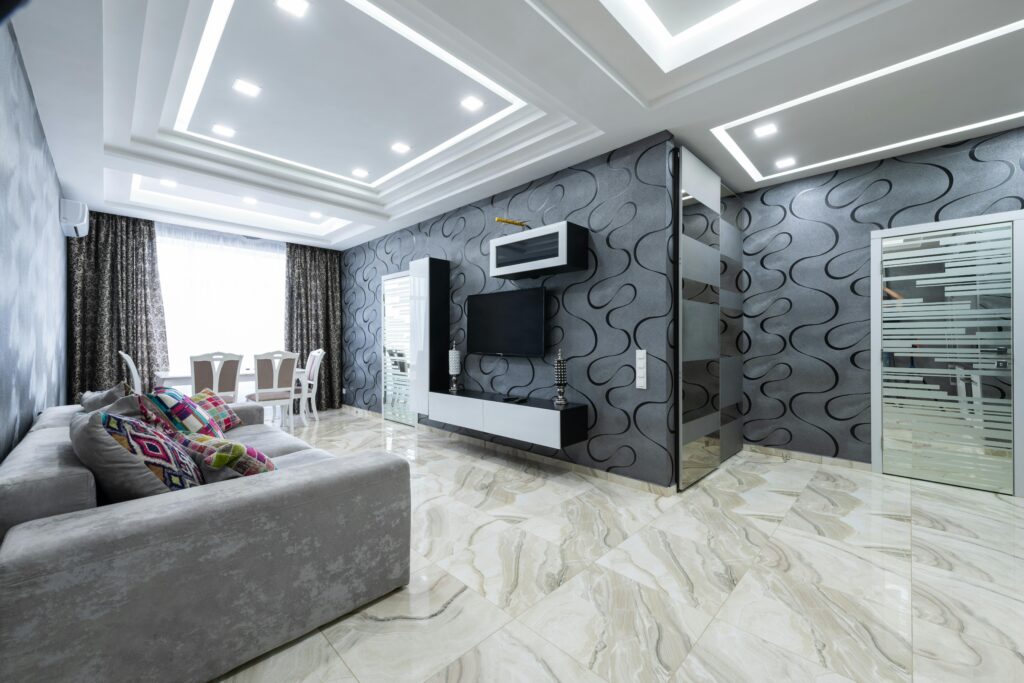
The Appeal of Marble Tiles
Marble tile are a symbol of luxury and sophistication. They have a timeless appeal and can elevate the look of any room. However, they do require some maintenance due to their porous nature. Regular sealing can help keep marble tile in top condition for years.
Exploring Mosaic Tiles
Mosaic tile are an excellent choice for those who want to add a bit of artistry to their space. These tile are small and come in various shapes, often arranged to create intricate patterns. Mosaic tile are commonly used as backsplashes in kitchens and bathrooms.
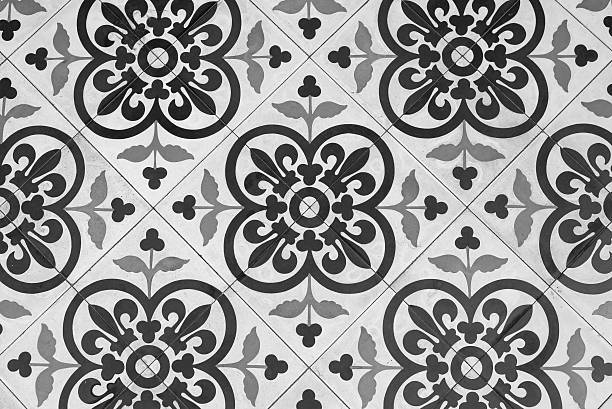
The Role of Backsplash Tiles in Kitchens and Bathrooms
A backsplash is a protective layer of tile installed on walls behind sinks or stoves. Backsplash tile not only protect your walls from spills and splashes but also add a stylish touch to your kitchen or bathroom. Mosaic, ceramic, and porcelain tile are popular choices for backsplashes.
Vitrified Tiles: The Perfect Choice for High-Traffic Areas
Vitrified tile are a type of tile that has been fused with silica and quartz. This gives them an extremely durable and non-porous surface. Vitrified tile are ideal for high-traffic areas, such as hallways, living rooms, and commercial spaces.

Glazed vs. Unglazed Tile
Tile can be either glazed or unglazed. Glazed tile have a shiny, protective layer that makes them water-resistant and easy to clean. Unglazed tile, on the other hand, do not have this layer, giving them a more natural, rustic look. Both types of tile have their advantages depending on the aesthetic you’re going for.
Creative Tile Ideas for Modern Homes
Tile aren’t just functional—they can also be a major design element. Here are some creative tile ideas for modern Home Depot Flooring:
- Geometric Patterns: Use geometric tile shapes to create bold, modern designs.
- Two-Tone Tile: Combine two different colors of tile to create a striking contrast.
- Large Format Tile: Use large tile for a sleek, minimalistic look that reduces grout lines.
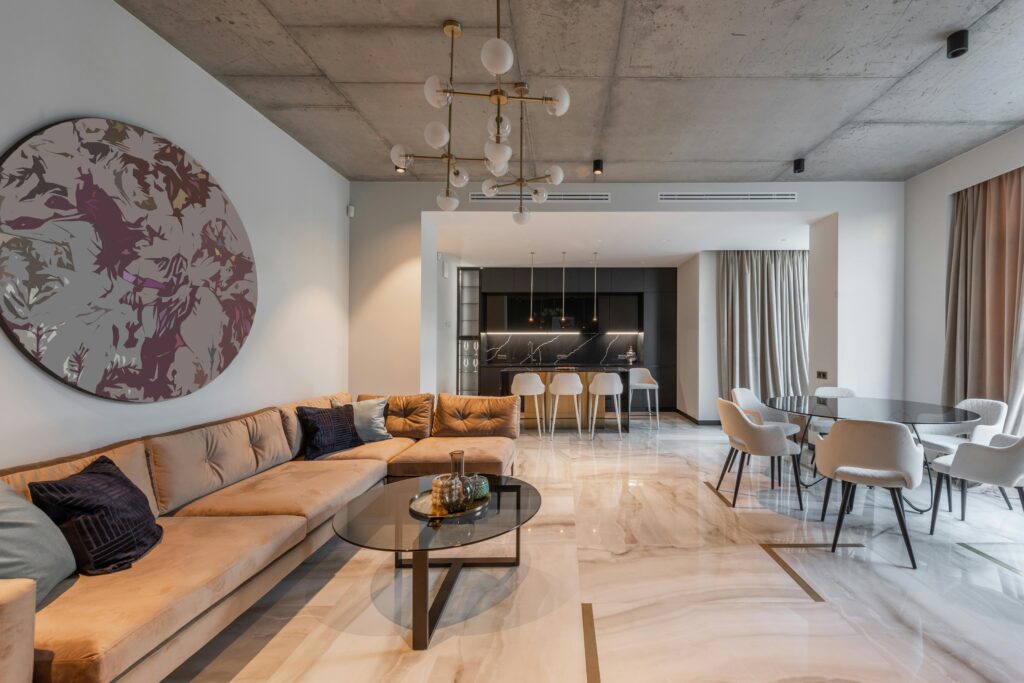
Tile Trends to Watch in 2024
Tile trends are constantly evolving. Here are a few trends that will dominate the tile industry in 2024:
- Sustainability: Eco-friendly tile made from recycled materials are on the rise.
- Bold Colors: Vibrant, bold-colored tile are becoming more popular for creating statement walls.
- Textured Tile: Textured tile, such as those that mimic wood or fabric, will continue to be in demand.
Tile Costs and Budgeting Tips
Tile come in a wide range of prices depending on the material, size, and design. Here’s how you can budget for your tile project:
- Estimate the Area: Measure the area to be tiled to get an idea of how many tile you will need.
- Set a Budget: Decide on the maximum amount you’re willing to spend on tile and related materials like grout and adhesive.
- Look for Deals: Check online retailers, discount stores, and tile sales for better prices.
Tips for DIY Tile Installation
If you’re someone who enjoys a good DIY project, installing tile yourself can be incredibly satisfying and cost-effective. Here are some helpful tips to guide you through the process:
- Prepare Your Tools: Make sure you have all the necessary tools, such as a tile cutter, notched trowel, spacers, a rubber mallet, and a level.
- Plan Ahead: Measure twice, cut once! Take your time planning the layout before you start tiling.
- Use a Chalk Line: To ensure that your tile are straight, use a chalk line to mark a guide.
- Apply the Adhesive: Spread the adhesive evenly, working in small sections. Don’t cover too large an area at once, as the adhesive can dry before you lay the tile.
- Press Tile Firmly: Once a tile is placed, press it firmly into the adhesive. Tap it gently with a rubber mallet to ensure it’s seated properly.
- Leave Gaps: Don’t forget to leave a small gap between the tile for grout. This helps the tile expand and contract with temperature changes.
- Grouting: Once the tile are laid and the adhesive has dried, fill the gaps with grout. Use a grout float to spread the grout evenly, and clean up any excess as you go.
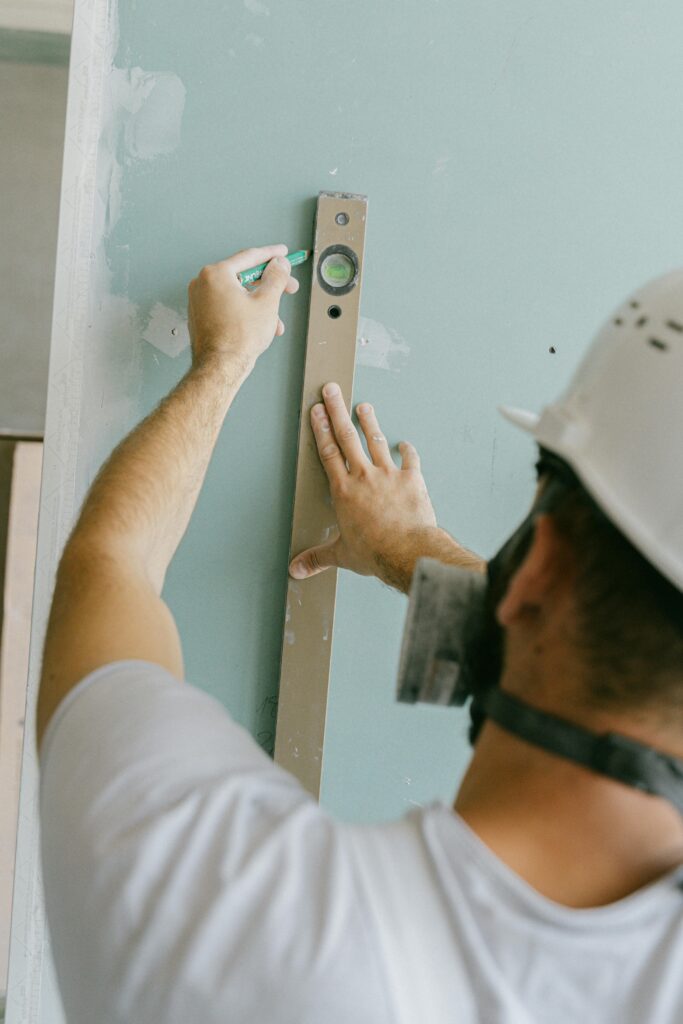
Tiles for Small Spaces
Not all rooms are huge, and sometimes it can be a challenge to design small spaces. Tile are a great solution for maximizing the look and feel of these areas. Here’s how to make the most of tile in compact spaces:
- Lighter Colors: Lighter-colored tile can make small rooms feel more open and airy. Consider shades like white, cream, or soft pastels.
- Large Tiles: Large-format tile can give the illusion of more space by minimizing grout lines and creating a seamless look.
- Vertical Patterns: For a bathroom or small kitchen, consider using vertical tile patterns to make the walls appear taller.
- Mirrored Tiles: Adding mirrored or reflective tile can open up a space and make it feel bigger and brighter.
How to Avoid Common Tile Installation Mistakes
While tiling may seem straightforward, there are some common mistakes that can cause issues later on. Here are a few to watch out for:
- Incorrect Measurements: Failing to measure your space properly can result in an uneven layout. Always measure carefully before starting.
- Uneven Adhesive Application: Applying too much or too little adhesive can cause the tile to lift or not adhere properly. Spread the adhesive evenly with the correct trowel.
- Improper Grouting: If you leave too much grout between tile, it may cause cracking over time. Make sure the grout is applied evenly and fills the gaps without overflowing.
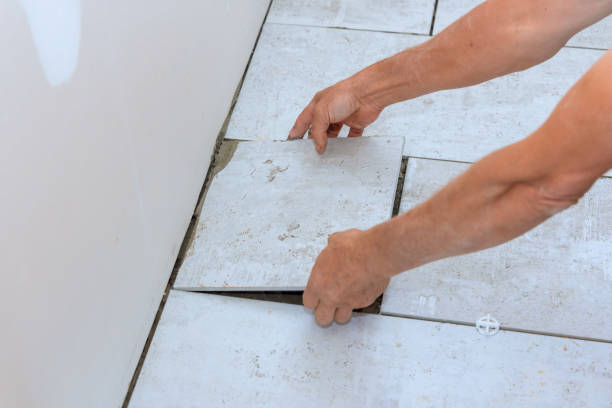
Tile Trends for 2024: What’s In and What’s Out
Keeping up with tile trends is essential for anyone looking to create a modern and stylish space. Here’s what’s expected to be popular in 2024:
In:
- Textured Tiles: Tile with 3D textures or those that mimic natural materials like wood and stone are on the rise.
- Bold Colors: Bold, vibrant tile will continue to be a top trend for adding personality to kitchens and bathrooms.
- Sustainability: Eco-friendly tile, made from recycled or sustainable materials, will dominate the market.
- Custom Patterns: Custom, unique tile designs are becoming increasingly popular, allowing homeowners to express their individuality.
Out:
- Overly Neutral Tones: While neutral colors are still popular, overly bland, beige tones are starting to fade from fashion.
- Small Tiles: Small tile, such as tiny mosaic pieces, are being replaced by larger tile for a more sleek and modern look.
Caring for Natural Stone Tiles
Natural stone tile, like marble and granite, add luxury to any space, but they require a bit more care than standard ceramic or porcelain tile. Here are some maintenance tips:
- Regular Sealing: Natural stone tile are porous, meaning they can absorb moisture and stains. Sealing them every few years will keep them looking fresh.
- Avoid Harsh Chemicals: Harsh cleaners can damage the finish of natural stone tile. Stick to mild soap and water.
- Wipe Spills Immediately: Spills, especially from acidic substances like vinegar or citrus, can stain or etch the surface. Wipe up spills immediately to protect the stone.
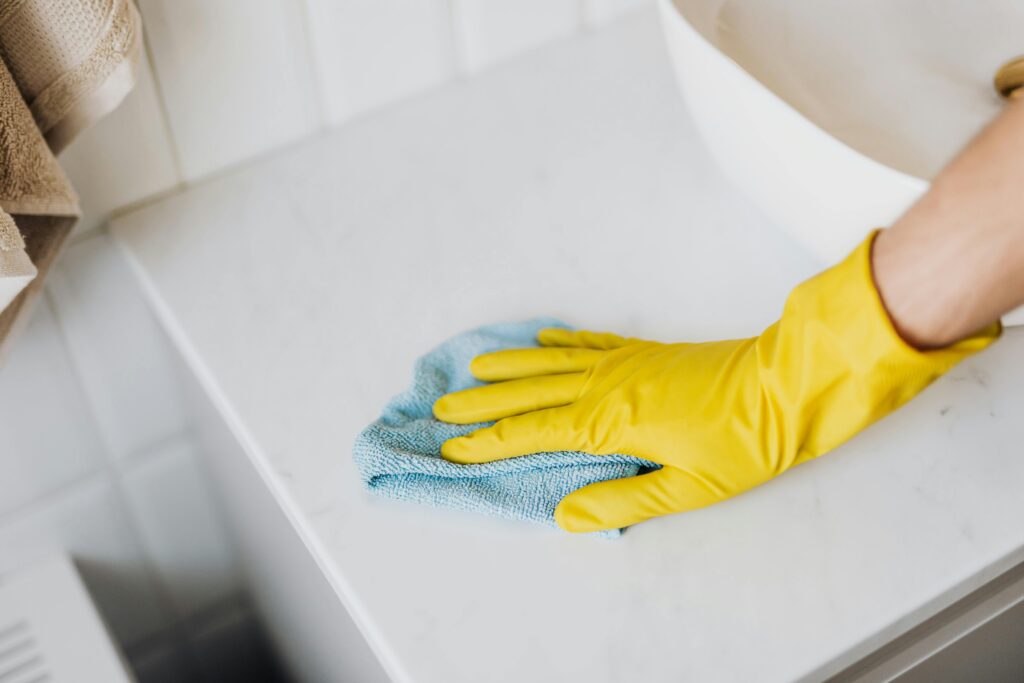
Outdoor Tile Options
Tiles aren’t just for interiors; they can also be used to enhance your outdoor spaces. When selecting tile for outdoor areas, you’ll want to focus on durability and weather resistance. Here are some great options for outdoor tiling:
- Porcelain Tiles: These are ideal for outdoor patios due to their high durability and water resistance.
- Stone Tiles: Natural stone tile, such as slate or travertine, are perfect for outdoor settings, giving a rustic and elegant feel.
- Anti-Slip Tiles: For safety in wet areas like poolside, consider anti-slip tile to reduce the risk of accidents.
- Terracotta Tiles: These tile have a warm, earthy look, making them perfect for Mediterranean-style gardens and terraces.
The Future of Tile Technology
Tile technology has come a long way in recent years, and it’s likely to keep evolving. Some of the most exciting advancements in tile technology include:
- Smart Tiles: Imagine tile that can change color or design based on your preferences! Smart tile are a futuristic concept that might soon be integrated into homes.
- Self-Cleaning Tiles: These tile are coated with special substances that prevent dirt and bacteria from sticking, making them incredibly easy to maintain.
- Eco-Friendly Innovations: The tile industry is moving toward more sustainable practices, with manufacturers using recycled materials and creating tile with a lower environmental impact.

Frequently Asked Questions (FAQ)
- Q: Can I use tiles on walls as well as floors?
A: Yes, tiles can be used on both walls and floors. Just make sure to select the right type of tile for each surface. - Q: Are porcelain tiles more durable than ceramic tiles?
A: Yes, porcelain tile are more durable and water-resistant than ceramic tile, making them a better choice for high-traffic areas or wet environments. - Q: How do I remove old tiles?
A: To remove old tile, you’ll need a hammer and chisel. Start by loosening the grout and then pry the tile off carefully.
Author Remarks
Tiles are more than just practical coverings for floors and walls—they are an expression of style and personality. Whether you’re looking for functionality, beauty, or both, tiles offer endless possibilities for transforming your living spaces. From ceramic and porcelain to marble and mosaic, there’s a tile for every taste, every budget, and every room. So why not start your tiling project today and create the home of your dreams?


2 Comments